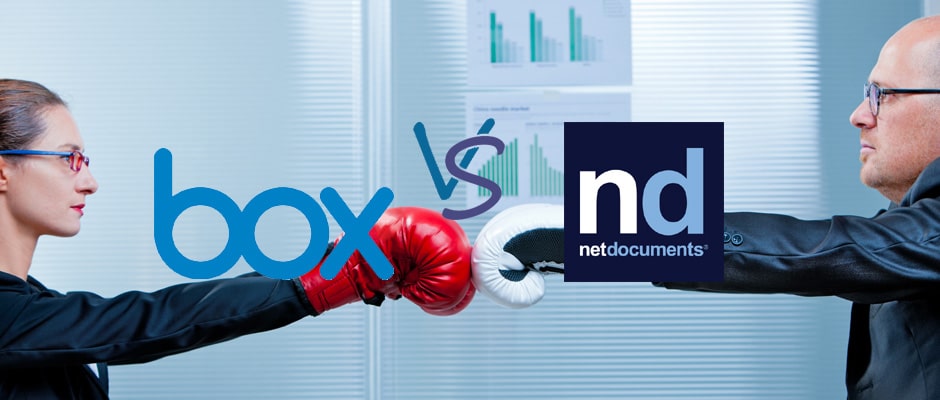Box vs NetDocuments (vs Dropbox vs Epona vs Google Drive vs...)


Back in 2016, we wrote about the choice between Box.com or NetDocuments. In the ensuing six years, a lot has changed for legal document management workflows. Today there are other players in web-based content management for law firms: (Dropbox, Epona, MS365 (which includes OneDrive and Sharepoint), as well as Google Workspace (Google for Business and Google Drive).
This article will update the Box vs NetDocuments competition and explore these additional document management systems.
The Definitive Guide to Buying Law Firm Software
NetDocuments is more of a practice management tool and Box.com is a document storage tool. Some of the core differences:
Shopping for Law Firm Practice Management Software? Start with LeanLaw
Box.com has a marketplace of apps that extends its functionality into other workflows in your law firm. It integrates with CRM tools and other practice management platforms such as Clio or Amicus Cloud. Newer SaaS (software-as-a-service) companies such as Factbox, a trial prep software, leverage documents stored in a Box.com environment, allowing the attorney to add facts and notes without having the documents live on a local machine.
Box.com really shines here in the app integrations. They have an app store with over 1500 app integrations including:
Beware of Under Investing in Technology in Your Mid-Size Law Firm
NetDocuments also has a slew of app integrations that it didn’t have six years ago:
Epona is a document management system with a deep integration into SharePoint, Office 365, and the Microsoft Office Suite. Because of those Microsoft integrations, and because Microsoft is also integrated into QuickBooks Online, a law firm can put together a practice management-like ‘tech stack’ with all the best in breed software that they enjoy using. Ten years ago when law firms bought document management solutions, Microsoft didn’t have all this functionality — and in real time. Now, it does and you should take advantage of what you’re already paying for.
The benefit of using a tech stack instead of an all-in-one software is that most practice management software is not good at everything. A law firm will buy the software for task management or for case management or whatever is their best feature. All the bells and whistles that come with that initial feature are not as dialed in. Why not use the best of everything?
Because of LeanLaw’s integration with both Epona and QuickBooks, there is a seamless connection between the financial world and the document world of the law firm — document management is streamlined, connected to billing and all matter-related. All of the matter’s most pertinent information is accessible: Metadata and other components can be scripted into the workflows.
An attorney who uses LeanLaw can onboard a client in 9 minutes and because of Epona’s automation, the secretarial function is gone. Not only are their cost savings, there are real time savings as well.
Case Study: $60K Savings for Law Firm by implementing LeanLaw tech stack
File storage, file sharing, document management — these functions can be effectively connected through open APis with the software you are already using. If you like Drive or Dropbox or OneDrive — stay with it! You’ll use it more and you’re already paying for it.
The idea here, is to consider the advancement of your current technology and to see if it can be integrated into a manageable law firm tech stack. If so, you’ll use it more and therefore, it will outperform the “better” software that you are loathe to learn and use.
Be kind to yourself. Use software you love.